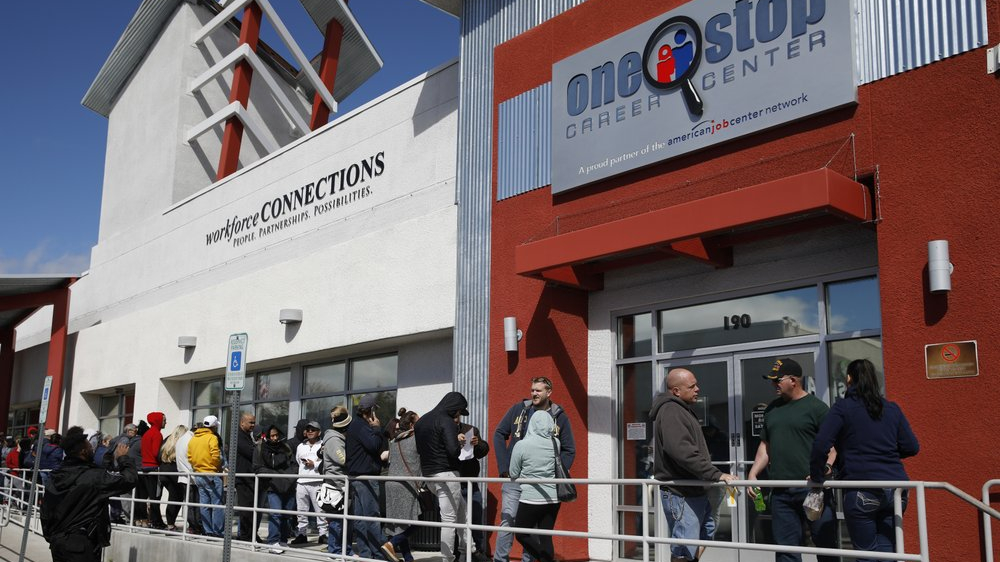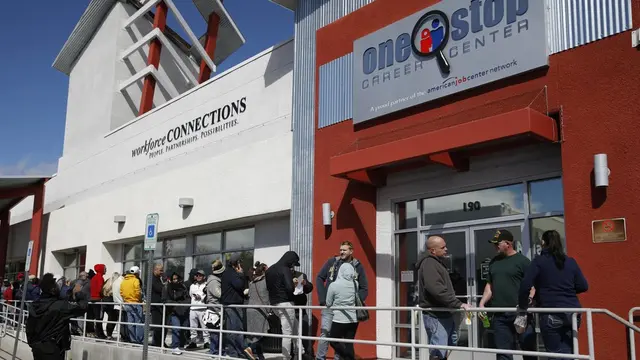
The United States' total nonfarm payroll employment rose by 2.5 million in May, and the unemployment rate fell to 13.3 percent, the U.S. Bureau of Labor Statistics reported Friday.
Although the report also noted that in May, the U.S. employment in government continued to decline sharply, it is better than what economists had expected the unemployment rate to be even worse in May, rising to nearly 20 percent.
The gradual reopening of the economy added new jobs rather than eliminating further positions, improving May data from the dramatic 14.7 percent in April.
"Really Big Jobs Report. Great going President Trump (kidding but true)!" Trump
tweeted
moments after the numbers came out.
U.S. President Donald Trump praised the job data at White House Press Conference on Friday.
Earlier, the U.S. unemployment rate soared by over 14.7 percent in April and the
coronavirus lockdown wiped out 20.5 million U.S. jobs during the same month.
Experts positive, citing if improvement lasts
Sameer Smana, senior global market strategist, Wells Fargo Investment Institute:
"Payrolls growth came in well ahead of expectations, and showed growth, while most were expecting another sharp loss."
"The rebound was confirmed by a bounce-back in weekly hours, participation rate, and manufacturing and private job growth."
"The unemployment and underemployment rates also seem to have peaked."
"If confirmed by readings in the coming months, this would suggest the worst is over for the labor market, which would be a positive for the consumer, consumption, and economic growth, which we expect to trough in the second quarter."
"Stocks, rates, and the U.S. dollar rose, while gold fell, which tells us that equity markets may have further to run in the near-term."
Jon Hill, interest rate strategist, BMO Capital Markets:
"It's causing a classic pro-growth shock into financial markets. But the reality is ADP printed deeply negative, ISM manufacturing employment showed further declines, ISM non-manufacturing employment showed further declines. So the NFP figure seems to be the outlier, which I think is one of the reasons why it's been greeted with cautious optimism."
Patrick Leary, chief market strategist, Incapital:
"The jobs report was very encouraging to say the least. I was expecting a better-than-expected number, but nothing like we're showing actual job gains. It doesn't jive with the weekly claims though. Something seems off. But however you slice it, this a good number."
"If it's related to PPP (payroll protection program), that's okay, which means the program worked. The question is when do we hand off to the real numbers, but even we had some giveback for June, the overall tone is positive."
Jim Paulsen, chief investment strategist at The Leuthold Group:
"There was discussion about whether people would be slow to go back because they're receiving unemployment benefits that they'll wait until they run out. It doesn't seem like people did that. If there was a job available, they took it."
"It's a pretty big turnaround. We're left still with very terrible numbers, a 13.3 percent unemployment rate. It's not like we're back to normal, but that's a big turn and a big unexpected turn."
"People were suffering. If they had a job, they a family, kids at home, bills to pay. They're scared. They finally get a call they can go back to work, they'd take it."
"Across the financial markets is the same message today. It's a V recovery message. We'll see if it lasts."
(With input from Reuters)
 简体中文
简体中文












